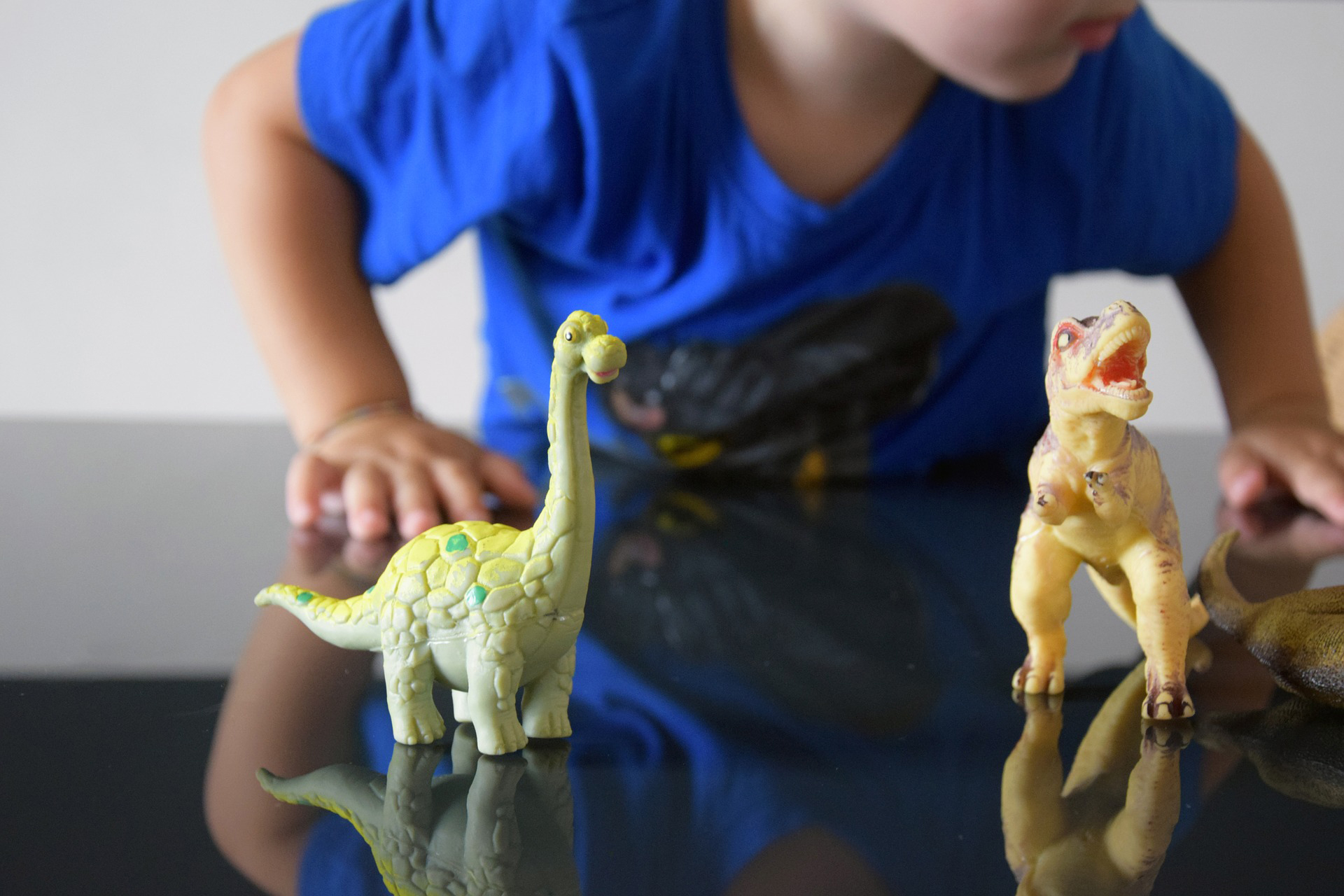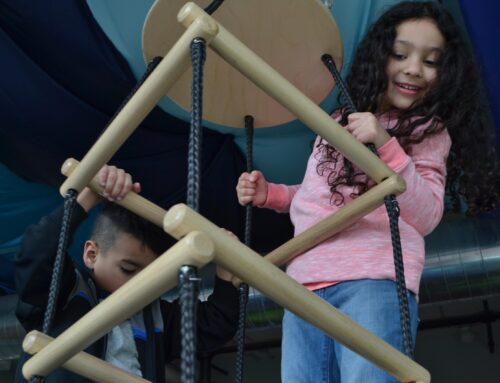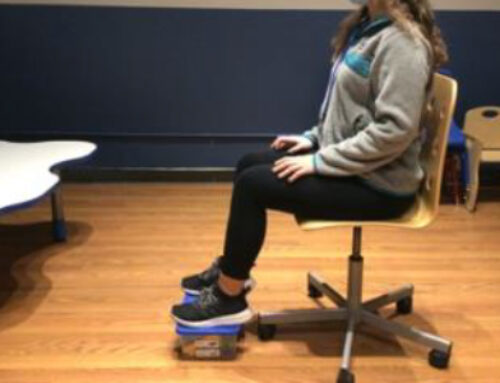“RAWRRR!!!” screamed the children from the gym, I mean, the dinosaur cave. Dinosaur week is here and we’re having a great time! At Blue Bird Day, each therapist creates an imaginary world full of adventure and knowledge for dinosaur week. Science and exploration provide children an outlet for creative play and learning. Plus, dinosaurs are often children’s favorite animal. They are scary, fascinating, and adventurous, and they provide hours of entertainment. From a therapeutic perspective, dinosaurs give movement and exercise an exciting twist. Physical therapy sessions at Blue Bird Day are even more exciting and adventurous when dinosaurs are involved.
What does dinosaur week look like during a physical therapy peer-oriented session? To start, dinosaurs provide an opportunity to navigate up and down the stairs using big “dinosaur” steps. This gives each child a chance to perfect their reciprocal/step-over stair navigation. It gives motivation for big steps without fear. Going down the stairs is sometimes intimidating for preschool students, but pretend play games where they have to bring dinosaur eggs downstairs make the task less scary.
While in the gym, dinosaur games take over the session. This includes dinosaur running activities incorporating huge dinosaur steps, galloping dinosaurs, and crawling dinosaurs. There are even dinosaur songs incorporated into each activity. Dinosaur pretend play games assist with peer interactions and collaboration among peers. It also provides opportunities for heavy work tasks to improve regulation. These heavy work tasks include carrying dinosaur eggs to their nest at the opposite side of the room, building dinosaur caves with large pillows and blankets, and jumping and flying like a dinosaur across the room.

Sometimes, dinosaur roars are intimidating for other peers. These noises are loud and scary, and an important part of dinosaur pretend play is modulating dinosaur roars to a soft quiet level. Dinosaurs need to learn how to be both loud and quiet. Teaching quiet whisper roars help relieve some of the auditory stress noted during dinosaur week. Another important lesson is teaching the children about the differences between dinosaurs. Some dinosaurs are mean and scary, but other dinosaurs are nice and gentle and eat plants. This is helpful when a child is overwhelmed by dinosaur week. If a child becomes overwhelmed, they can form their own quiet dinosaur nest where other dinosaurs are not allowed to bother them. Along with whisper dinosaur voices, this nest helps relieve any anxiety that may occur during physical therapy dinosaur sessions.
Dinosaur games and activities provide a great way to incorporate exercise and movement into day-to-day activities. Dinosaur week is a wonderful time full of adventure and fun! Provided below are some dinosaur movement ideas that can be completed during an at-home dinosaur week.
Have fun creating your own dinosaur week by incorporating the following activities:
- Take big dinosaur steps – incorporate dinosaur roars and large steps to assist with a step-over pattern on the stairs.
- Hide weighted balls/objects (dinosaur eggs) across the house and tell your child they need to protect each object. This heavy work will provide regulation for your child.
- Become a flying dinosaur by having your child lift their arms and legs up while lying on the floor. The “superman” position provides a strengthening activity while also flying like a Pterodactyl.
- Perform large dinosaur steps on flat ground to imitate a forward walking lunge while using T-rex arms.
- Create dinosaur dice that incorporate various dinosaurs and their own motor movements, including jump like a dinosaur, crawl like a dinosaur, run like a dinosaur, and climb like a dinosaur.

Blue Bird Day fosters socialization, sensory regulation, and pre-academic learning in children ages 2-7 years in therapeutic rotations that simulate preschool and kindergarten settings. Our compassionate therapists practice a relationship-based and family-centered approach, provide parent training, and collaborate on goals and individualized intensive treatment plans for your child.
We believe in a collaborative and multi-disciplinary team approach to therapy. A team of occupational therapists, speech-language pathologists, dietitians, developmental therapists, behavioral therapists, physical therapists, and therapeutic assistants are created for each child to ensure child and family are fully supported and the best possible results are achieved.
Options for individualized, group and virtual therapy sessions are available as well.
Want to learn more or you have a specific question? Feel free to connect with us here!



